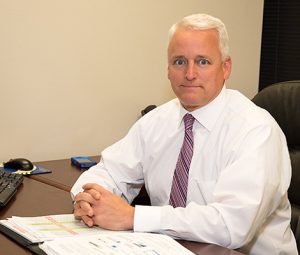An automatic enrollment provision can be a useful tool to drive employee engagement in plans, particularly for participants who otherwise have not yet considered their retirement situation.
These provisions allow an employer to withhold deferrals from the employee’s pay without the employee making an election. By utilizing automatic enrollment, an employer can boost participation while simultaneously simplifying the enrollment process.Although commonplace, these provisions have historically been entirely optional. Now, due to the SECURE (Setting Every Community Up for Retirement Enhancement) 2.0 Act of 2022, automatic enrollment provisions will be mandatory in certain cases. While some plans are considered to be “grandfathered” into their current provisions, others will need to be updated to comply with the new requirements starting in 2025. To find out if these new requirements apply to you, consider the following questions:
- Is your plan a 401(k) or 403(b) plan?
- Was your plan adopted after December 29, 2022?*
- Does your business have more than 10 employees?
- Have you been in business for more than three years?
* Please note, if your plan was part of a merger, there are certain exceptions that may apply that are not addressed in this article. We can take a closer look together.
If you answered “Yes” to all of these questions, your plan must include the following automatic enrollment provisions beginning January 1, 2025:
- The default deferral percentage must start between 3% and 10% as determined by the plan.
- On the first day of each new plan year following enrollment, the deferral amount will increase by 1% until it reaches a cap of 10-15%, again determined by the plan. This increase, called auto-escalation, is not required if the initial default rate is set to 10%.
- You will need to choose a Qualified Default Investment Alternative (QDIA) that meets criteria for transferability and safety per the Department of Labor’s (DOL’s) standards. While a QDIA was optional in the past, SECURE 2.0 provisions require it.
If you are not required to include automatic enrollment provisions in the plan, you may choose to add them anyway. In this case, you have more flexibility in your options as you don’t need to fulfill the above requirements. As such, there are various types of automatic enrollment provisions to consider:
The automatic contribution arrangement (ACA) is the most basic type of automatic enrollment. Employees are enrolled when they become eligible for the plan unless they opt out of deferrals or elect to defer at a different rate.
The eligible automatic contribution arrangement (EACA) builds onto the ACA. Instead of applying only to new participants, the EACA also includes any existing participants who have not yet made an election. A participant who elects to stop automatic deferrals within the first 90 days may withdraw the amount deferred, plus any earnings. EACAs also have an additional notice requirement, meaning that certain details must be communicated to employees prior to enrollment, as well as on an annual basis once enrolled.
The qualified automatic contribution arrangement (QACA) is a variant of the EACA which can be used for safe harbor plans, meaning it has stricter requirements. This includes a default deferral percentage that is at least 3%—but not more than 10%—of compensation. Auto-escalation is also required, increasing this default deferral by at least 1% per year until it reaches a cap set between 6% and 15%. Auto-escalation is not required if the initial default rate is set to 6% or more. Your plan document will state the percentages.
Since this pertains to safe harbor plans, one of the following employer contributions is required:
- A 100% matching contribution on deferrals up to 1% of compensation, plus a 50% match for deferrals between 1% and 6% (a maximum of 3.5%), or
- A non-elective contribution of 3% of compensation for all participants.
The safe harbor matching contribution for a QACA is less than the traditional safe harbor plan, which is 4%. In addition, while the employer contribution must be immediately vested in a traditional safe harbor plan, a QACA allows contributions to be 100% vested after two years.
Regardless of the reason the provisions are included in your plan, automatic enrollment is a beneficial feature that helps employees save for retirement, as they no longer need to opt in to begin deferring. Employees who delayed or ignored their initial enrollment will still have their deferred funds to fall back on later. Choosing the initial default deferral rate and the maximum rate after auto-escalation are important plan decisions. While SECURE 2.0 sets the minimum requirements for plans, there may be a certain combination of provisions that best suits your plan (how complex will it be to administer year after year?) and your participants (what percentage will help them save for retirement without drastically impacting their take-home pay?). A discussion with us can help you find the right fit.
This newsletter is intended to provide general information on matters of interest in the area of qualified retirement plans and is distributed with the understanding that the publisher and distributor are not rendering legal, tax or other professional advice. Readers should not act or rely on any information in this newsletter without first seeking the advice of an independent tax advisor such as an attorney or CPA.
Top of Page
© 2024 Benefit Insights, LLC. All Rights Reserved.













